Abstract
Seven beta-lactam antibiotics were studied for both their antimicrobial activity and the degree to which they produced inoculum effect on Escherichia coli, Klebsiella pneumoniae, and Salmonella typhimurium. Aztreonam, cefoperazone, and ceftazidime were poorly bactericidal, caused marked bacterial filamentation, and exhibited a large inoculum effect on E. coli, K. pneumoniae, and S. typhimurium. Cefotaxime and ceftriaxone were more rapidly bactericidal, caused only a moderate amount of filamentous forms, and exhibited a modest inoculum effect, while cefoxitin and imipenem both were rapidly bactericidal and exhibited only a minimal-to-no-inoculum effect. The inoculum effect did not correlate with drug stability during incubation with the bacteria. Inoculum effect on these species of the family Enterobacteriaceae appears to be a manifestation of increase in optical density secondary to the development of filamentous bacterial forms with an increase in bacterial mass during exposure to antibiotics which are not rapidly bactericidal. These observations have a clear significance for the susceptibility testing of beta-lactam antibiotics when turbidity is used as a parameter to determine presence of bacterial growth.
Full text
PDF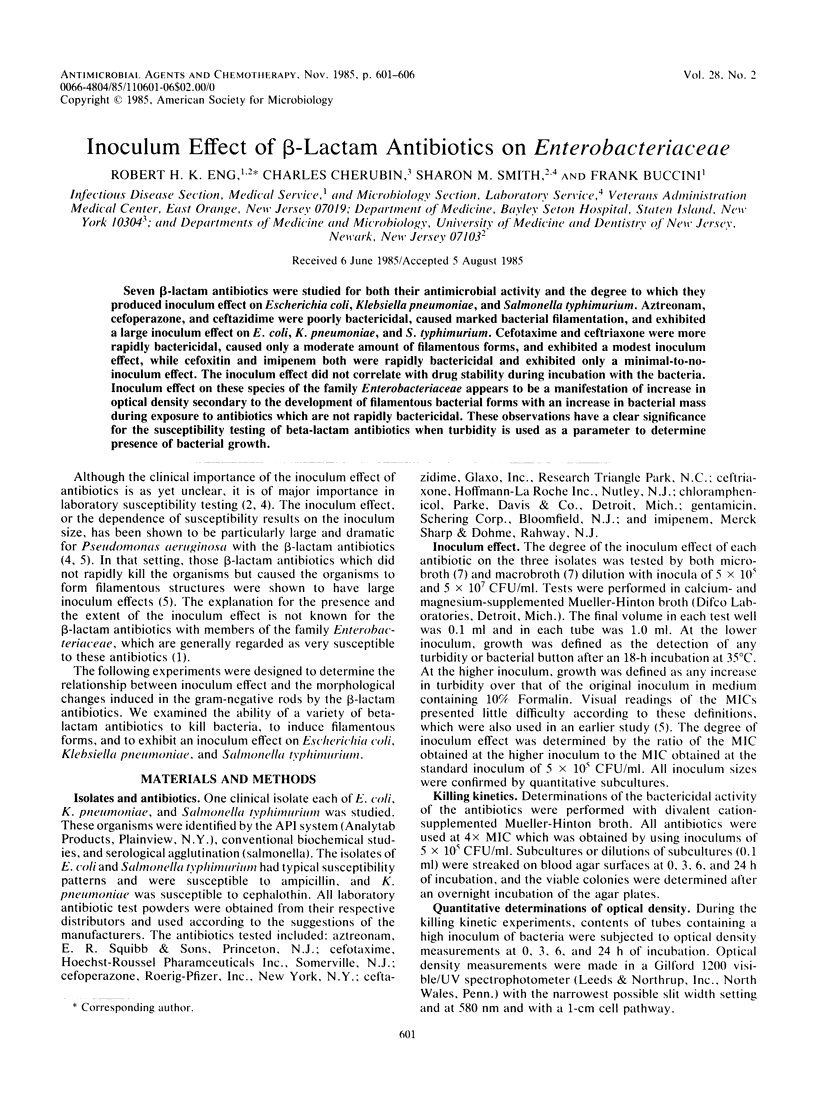
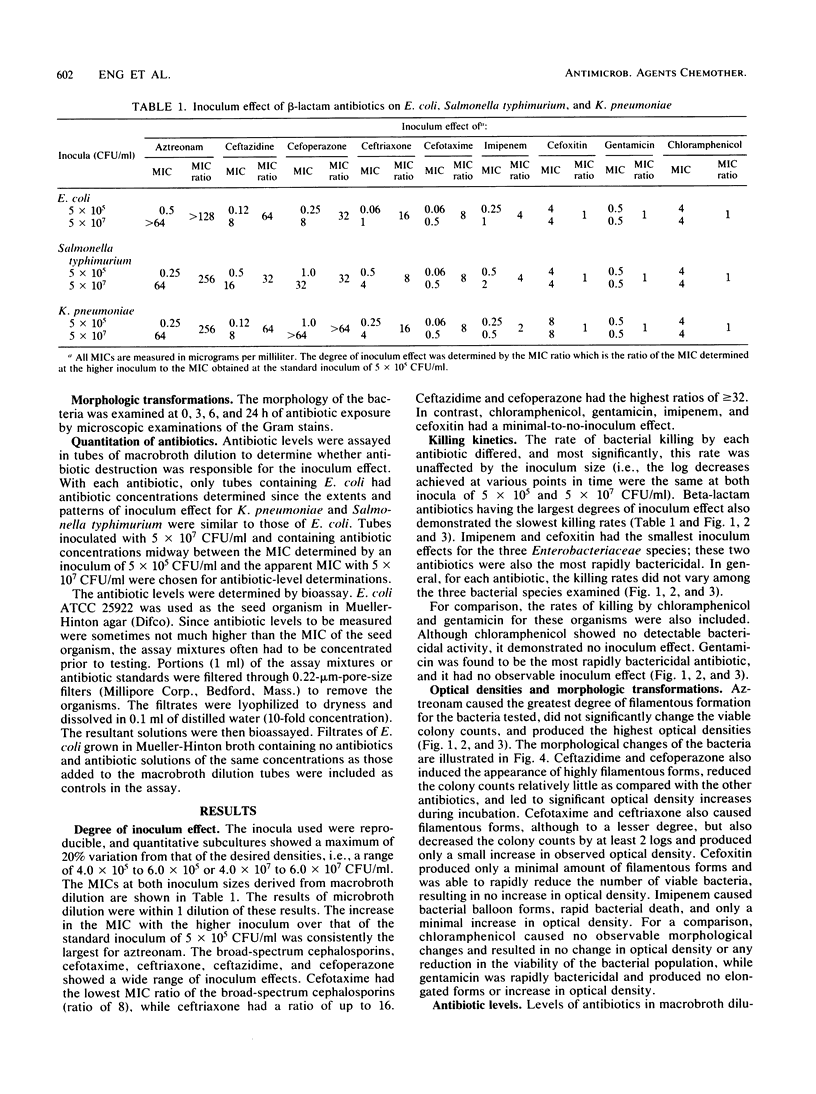
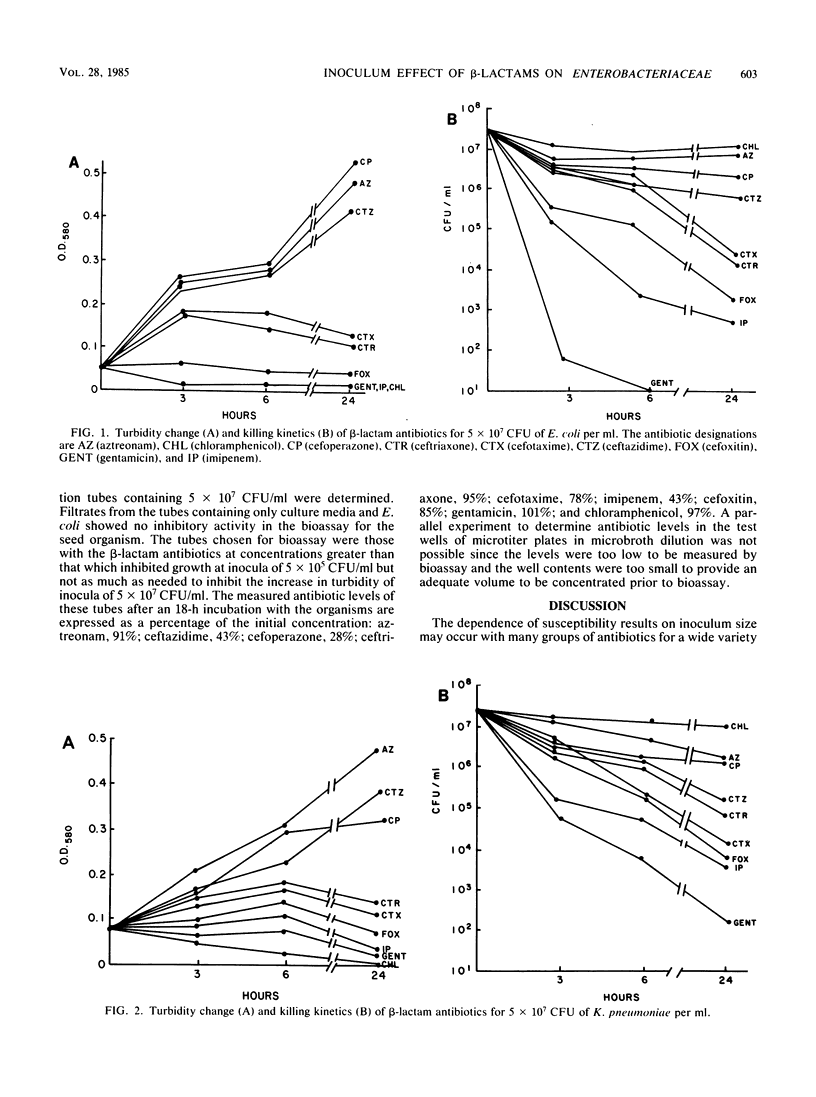
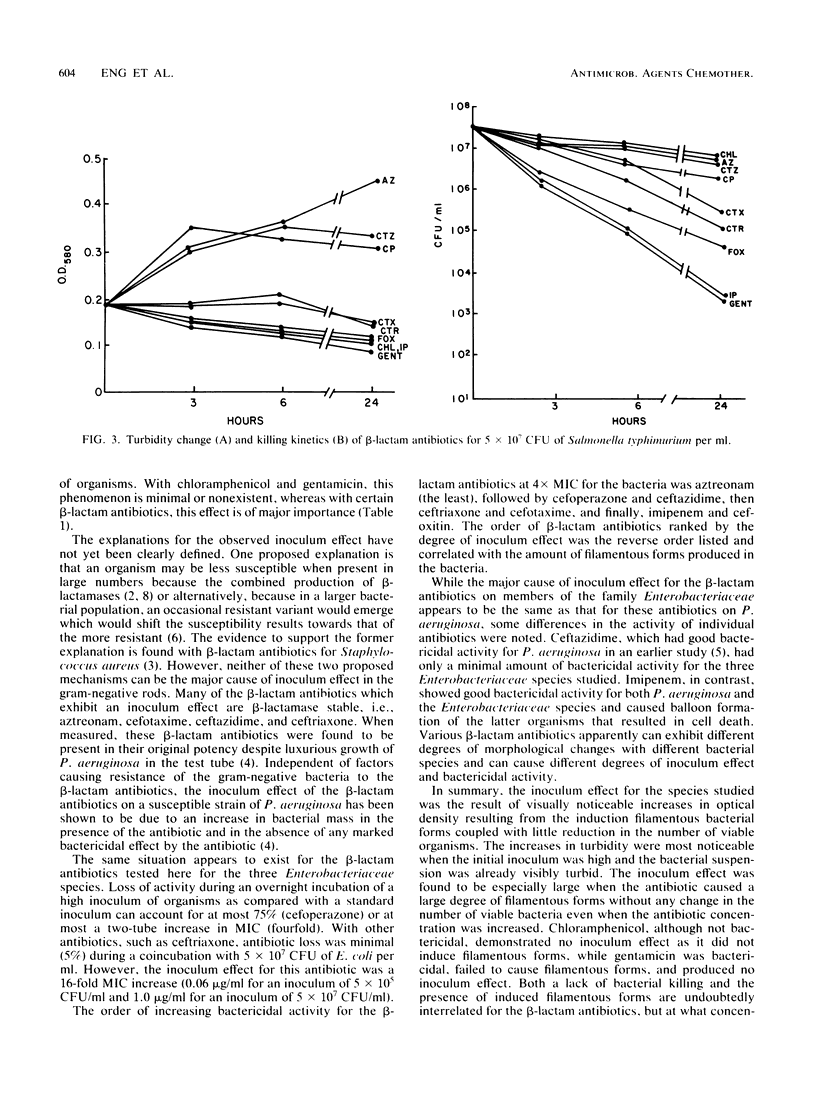
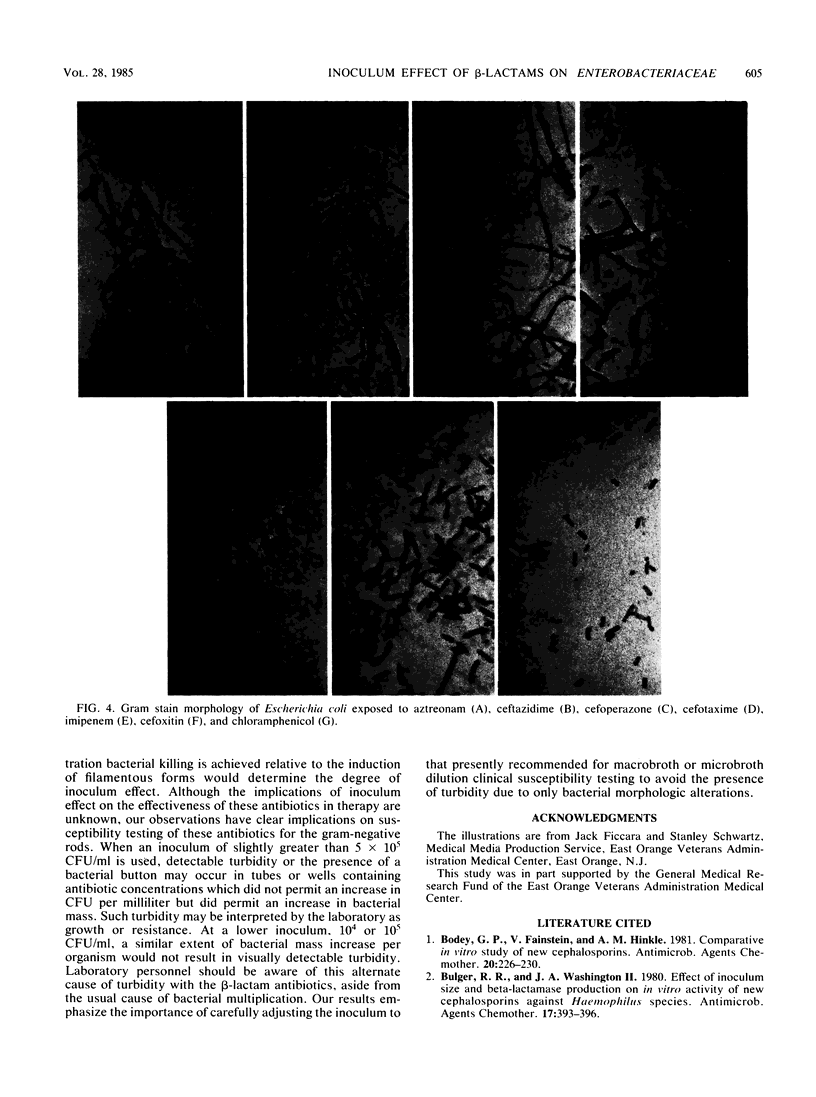
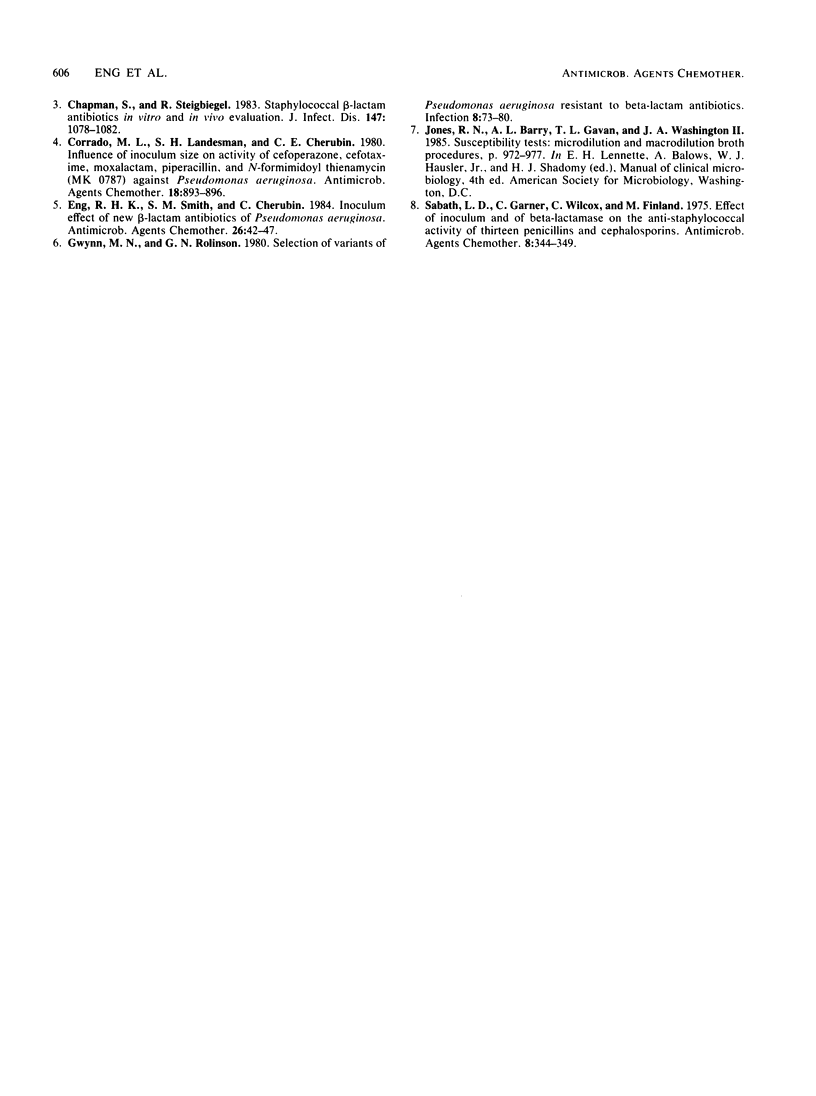
Images in this article
Selected References
These references are in PubMed. This may not be the complete list of references from this article.
- Bodey G. P., Fainstein V., Hinkle A. M. Comparative in vitro study in new cephalosporins. Antimicrob Agents Chemother. 1981 Aug;20(2):226–230. doi: 10.1128/aac.20.2.226. [DOI] [PMC free article] [PubMed] [Google Scholar]
- Bulger R. R., Washington J. A., 2nd Effect of inoculum size and beta-lactamase production on in vitro activity of new cephalosporins against Haemophilus species. Antimicrob Agents Chemother. 1980 Mar;17(3):393–396. doi: 10.1128/aac.17.3.393. [DOI] [PMC free article] [PubMed] [Google Scholar]
- Chapman S. W., Steigbigel R. T. Staphylococcal beta-lactamase and efficacy of beta-lactam antibiotics: in vitro and in vivo evaluation. J Infect Dis. 1983 Jun;147(6):1078–1089. doi: 10.1093/infdis/147.6.1078. [DOI] [PubMed] [Google Scholar]
- Corrado M. L., Landesman S. H., Cherubin C. E. Influence of inoculum size on activity of cefoperazone, cefotaxime, moxalactam, piperacillin, and N-formimidoyl thienamycin (MK0787) against Pseudomonas aeruginosa. Antimicrob Agents Chemother. 1980 Dec;18(6):893–896. doi: 10.1128/aac.18.6.893. [DOI] [PMC free article] [PubMed] [Google Scholar]
- Eng R. H., Smith S. M., Cherubin C. Inoculum effect of new beta-lactam antibiotics on Pseudomonas aeruginosa. Antimicrob Agents Chemother. 1984 Jul;26(1):42–47. doi: 10.1128/aac.26.1.42. [DOI] [PMC free article] [PubMed] [Google Scholar]
- Gwynn M. N., Rolinson G. N. Selection of variants of Pseudomonas aeruginosa resistant of Beta-lactam antibiotics. Infection. 1980;8(2):73–80. doi: 10.1007/BF01639151. [DOI] [PubMed] [Google Scholar]
- Sabath L. D., Garner C., Wilcox C., Finland M. Effect of inoculum and of beta-lactamase on the anti-staphylococcal activity of thirteen penicillins and cephalosporins. Antimicrob Agents Chemother. 1975 Sep;8(3):344–349. doi: 10.1128/aac.8.3.344. [DOI] [PMC free article] [PubMed] [Google Scholar]



